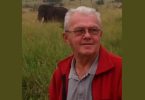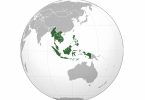Misael Garcia’s dark brown eyes look out with a steady gaze at the black and white photos of some of the 75,000 people who were killed in El Salvador’s civil war.
As he guides people around the Museum of the Revolution, he tells the story of the conflict slowly but with intense passion.
Every so often his speech falters, and then fails altogether. He lifts his cap and puts his finger on a long thin scar just above his right ear to explain why.
“In 1982 we were attacking a small town under the control of government troops. A bullet went through the side of my head. That’s why my voice sometimes goes.”
Mr Garcia spent six months in a coma in one of the rebels’ jungle field hospitals. He returned to fight for the guerrilla’s highly-trained special forces unit until UN-sponsored peace accords were signed in 1992.
Now 44, Mr Garcia is one of a team of former rebels who show up to 8,000 people a month around the museum, in the isolated town of Perquin in north-eastern El Salvador.
This town was known as the “guerrilla capital” during the conflict.
Among the items on display in three simple rooms are home-made land mines, a leather pouch where kidnapping ransom money was kept, and American radios captured from the US-backed government troops.
One of the prize exhibits is the twisted wreckage of a helicopter brought down by the rebels. A top army commander, Lt Col Domingo Monterrosa, died in the attack.
He had been in charge of a battalion said to be responsible for the killing of around 900 civilians in the nearby town of El Mozote. It was one of the largest massacres in recent Latin American history.
History’s importance
According to Felipe Caceres, the director of the museum, the number of visitors is increasing every month.
“We are restructuring the museum. We are building two more rooms. Even just this year, many more foreigners from Europe and North America are coming to learn about what happened here.”
El Salvador’s Tourism Minister Ruben Rochi accepts that this is what some visitors want to see.
While pointing out that the armed forces have their own museum in the capital, San Salvador, he told the BBC: “The civil war in the 1980s is part of our history that we can’t hide. People go to Berlin to find out about the Holocaust.
“They go to Hiroshima to learn about the bombs that were dropped. El Salvador is no exception – tourists want to find out what happened.”
Heading south from the mountains to the Pacific coast, tourism of a very different kind is emerging.
These remote black sandy beaches fringed by rocky points used to be where boats dropped off weapons for the rebel fighters. Now they drop off foreigners who come here to surf some of the best waves in Latin America.
Juan Antonio Flores, 40, passes down boards to his boatload of Peruvian surfers who are bobbing about in the warm water.
They paddle off to test themselves on the world class point break called Punta Mango.
‘Mega-projects’
Juan earns three times as much now as he did during the war. He smiles and says: “When I think of how bad things were here during the fighting, and how they are now, it makes me feel proud of my country.”
On a nearby headland, in the shade of some palm trees overlooking Las Flores beach, Rodrigo Barraza checks his plans and looks out across an area where the dense foliage has been cleared.
He is the architect of a new development of eight luxury villas and a spa.
In the complex, which is called Utopia, the owners will each have their own gardens, swimming pools and views of the ocean.
It is the first such building of its kind in this region. They are for sale off-plan within the next few weeks with an asking price of hundreds of thousands of dollars.
Mr Barraza says that sustainable building methods are being used.
He says: “This is a hidden place, and we want to keep it from mass tourism and commercial profit… We are trying to keep it in its natural state.”
Despite Mr Barraza’s hopes, there are six “mega-projects” in the pipeline for El Salvador, which will bring thousands more hotel rooms and several golf courses.
These secluded beaches are no longer just for the adventurous surfers.
bbc.co.uk






















